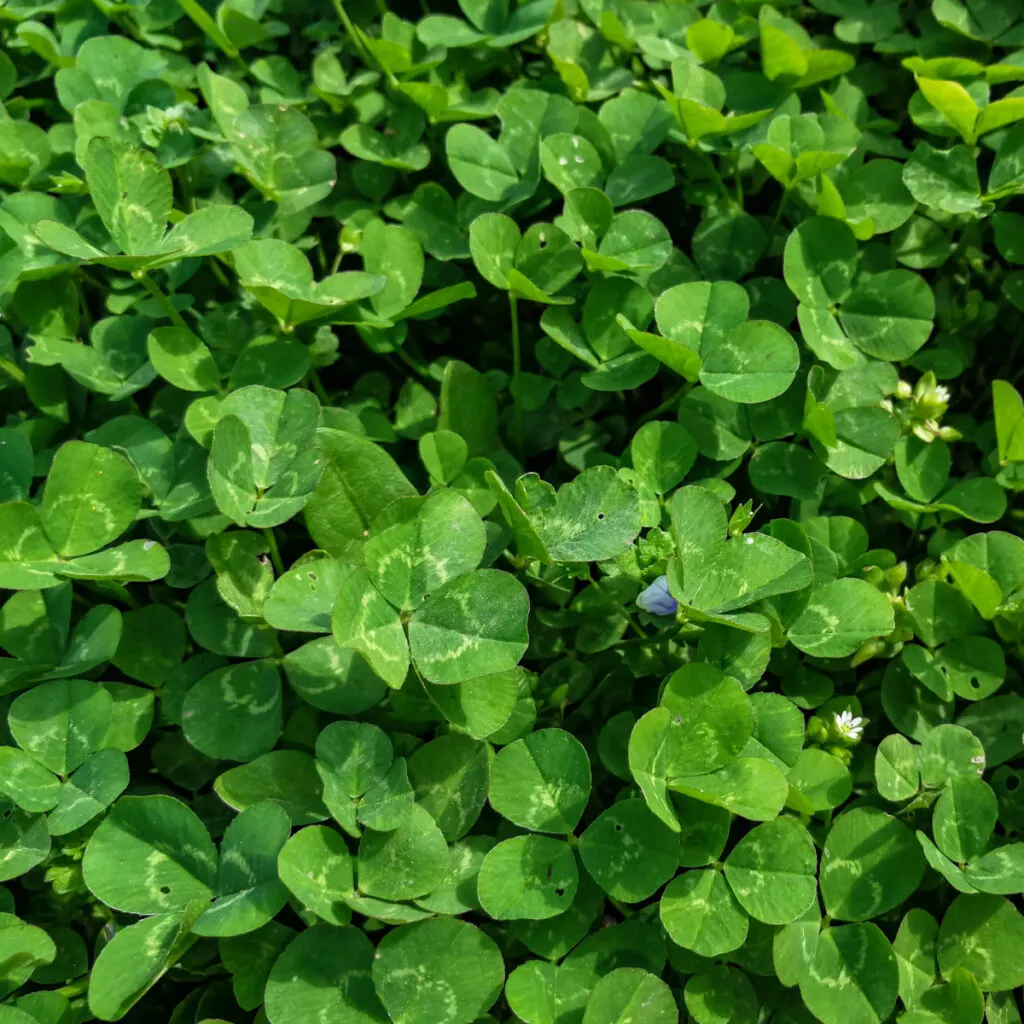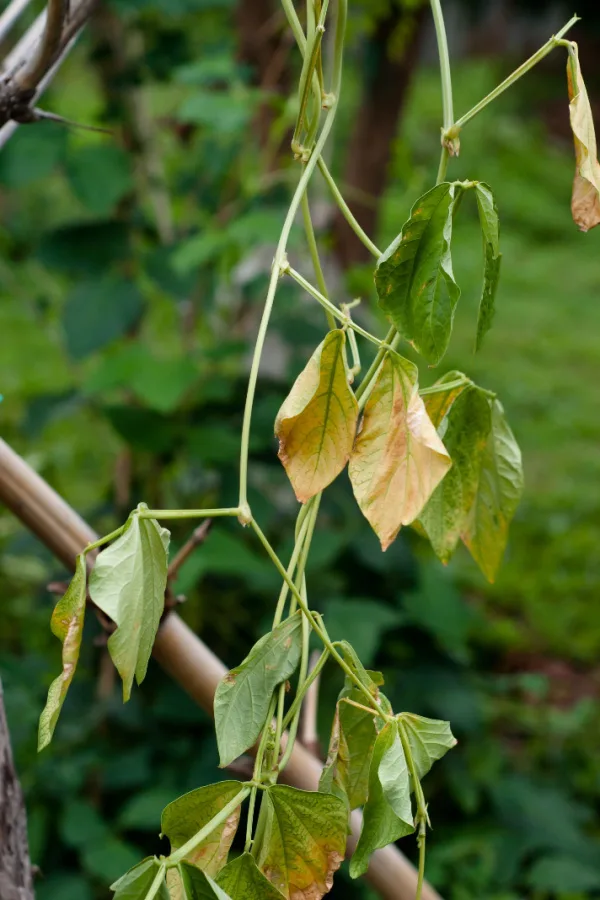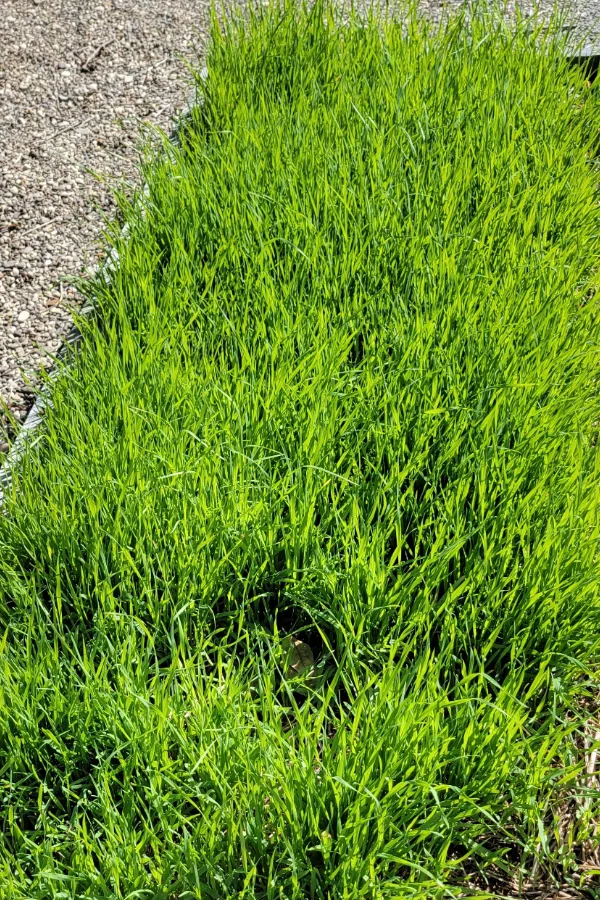Without a doubt, the best way to protect and recharge the soil in your garden this fall is to plant a cover crop. Not only is it one of the easiest “crops” you will ever plant, it will set the stage for you to have your best gardening season ever next year!
Cover crops provide an amazingly long list of benefits for a garden. For starters, by covering your soil as soon as the garden season ends with a thick green covering of vegetation, you protect your soil from thousands upon thousands of weed seeds finding a home the bare dirt.
Leaving a garden bare over the winter is like opening the flood gates for weeds. Thistle, dandelion and hundreds of other weed seeds can blow in and “plant” themselves in your soil. And when next spring rolls around, they come to life to give you weeding chores all summer long!

But more than just protecting your garden from weeds, a cover crop also rejuvenates tired soil. As the roots of the crop go down in the soil, they help to break it up. This makes it easier for vegetables to grow and develop deep roots.
Even better, once the crop dies off or is tilled into the soil next spring, all of that organic matter breaks down, boosting the soil’s fertility as well. And if all of that wasn’t enough, a cover crop also helps keep your soil safe from erosion from late fall all the way through winter.
With all of those benefits in mind – here is a look at when and how to plant a cover crop – along with some of the best choices to use for covering your garden!
How To Plant A Fall Cover Crop
When To Plant A Fall Cover Crop
The best time to plant a fall cover crop is the exact moment you clear your crops from a space. The great thing with cover crops are that you don’t have to plant them all at once over an entire garden. You can actually plant as each portion of your garden finishes off.
Some crops finish far earlier than others during the growing season. Beans might end producing in early August. Sweet corn usually does as well. And as you pull these crops from the ground, it’s a perfect time to follow with a cover crop.

First and foremost, this method breaks the chore down into manageable tasks. But it also ensures that your soil will never be bare, protecting it from weeds the entire time. You can use this same method when cover cropping raised beds spaces too. See: The Best Cover Crop For Raised Beds – Growing Oats!
What To Plant – Choosing A Fall Cover Crop
There are a lot of choices when it comes to choosing a cover crop. The choice really depends on whether you will be tilling your crop in or want a no-till option.
At the top of the list for no till crops are annual rye and oats. Both cover the garden soil in a thick coat of bright green grass-like blades. Underneath the soil, their roots take hold to help break up hard soils. Even better, both also help to fix nitrogen levels in the soil. And that can be huge for helping nitrogen loving vegetable plants like tomatoes and peppers next year!
Annual rye and oats are cereal grain cover crops. You want to make sure when purchasing you are not buying annual rye grass, but the grain seed. Cereal annual rye will go dormant in the winter and come back to life in early spring. But by mowing it off early it will then die off before planting in late spring.
Oats on the other hand will die off with the first winter hard freeze. The vegetation stays in place to cover the soil. You can then mow it off in the spring and plant without the need for tilling. Affiliate Product Link : No-Till Garden Farm and Garden Cover Crop Mix

If cereal rye or oats are not an option, hairy vetch, buckwheat, field peas and red clover are also excellent choices for a fall cover crop. Some crops will need to be tilled in to terminate, so it’s important to keep that in mind when planting.
How To Plant A Cover Crop In The Fall
Planting a cover crop is one of the easiest garden chores of all. There is no need to till or re-till the garden when planting. Simply rake the soil gently and apply the seed, either by hand, or with a broadcast spreader. You spread cover crop seeds exactly as you would grass seed.
Once the seed is down, gently rake seed into the soil. You do not have to cover the seed with soil, but raking to “set” the seed in will help protect it from hungry birds. A light coating of straw is helpful. Not only will it hold in moisture for seed, it also protects from birds and protects the soil from weed seeds blowing in until the cover crop comes up.
Cover crops germinate quickly in the warm soil of late summer and early fall. Only water if extremely dry. Usually within a few weeks, the garden will begin to be completely covered in a protective blanket. And once up – you garden has all-winter protection!
Listen In Below To Our Complete Podcast On Cover Crops!
Maintaining A Cover Crop – How To Plant A Cover Crop In The Fall
The best news of all is how easy it is to maintain a cover crop. In fact, after planting, cover crops require little maintenance through the fall and winter months. The only real rule for maintaining a cover crop is to never allow it to go to seed in the garden.
Crops that go to seed can create weeding issues as the seeds germinate during the growing season. If the crop grows too large and begins to develop seed heads, simply mow it off. This will eliminate any worry of reseeding.
In the spring, you can turn your cover crop over (with a shovel or by tilling), or allow it to die off and then plant through it. The no-till method requires the least amount of work when it comes to utilizing cover crops. Again, some crops do not work as no-till options as they will continue growing until you turn them over.
Whether tilling in or using the no-till method, the entire crop is given back to the soil. In the process, it enriches and energizes it for the coming year’s garden to reap the benefits. Here is to protecting and recharging your garden this fall with an incredible cover crop!
Follow Our Facebook Page For Great Gardening Tips And Advice! This Is My Garden Facebook Page
This Is My Garden is a garden website created by gardeners, for gardeners. Jim and Mary Competti have been writing gardening, DIY and recipe articles and books and speaking for over 15 years from their 46 acre Ohio farm. They publish three articles every week, 52 weeks a year. Sign up today to follow via email, or follow along!
